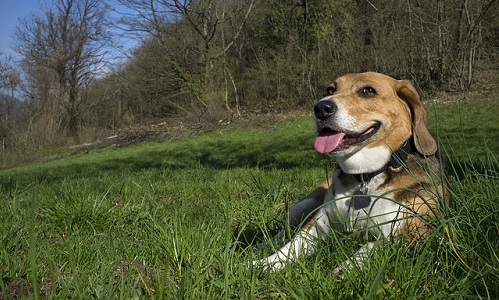Eating is a big part of your dog’s life. Aside from it being a social activity and a way for your dog to integrate with his pack, food is a source of comfort and relaxation for your dog. So what happens when your dog begins to show signs of discomfort and pain during or after meals? There are several reasons why your dog could be dissuaded from eating, but one of the most common ailments that relate to canines and their eating habits is acid reflux.
What is Canine Acid Reflux?
Acid Reflux in dogs, also known as gastroesophageal reflux disease, is a relatively common ailment for animals, especially canines. Acid reflux is the result of gastrointestinal malfunction wherein stomach acid, and other fluids bypass the sphincter muscle of the upper digestive system and fill the esophagus with stomach acid. Sometimes referred to by its acronym GERD, this regurgitation of stomach fluid is uncomfortable for dogs and is often characterized by obvious pain and distress.
What are the Causes of Acid Reflux in Dogs?
 Several internal and external influences could stimulate the onset of acid reflux in a dog. Most often, it is a combination of external stimuli and internal stressors that combine to create a gastric flare up called gastritis. Most commonly, gastritis is brought on by a high-fat diet and is thought to be the leading cause of acid reflux in dogs. Additionally, dry food like kibble tends to be harder for dogs to digest and can put a dog at a higher risk of developing, or agitating, an acid reflux condition.
Several internal and external influences could stimulate the onset of acid reflux in a dog. Most often, it is a combination of external stimuli and internal stressors that combine to create a gastric flare up called gastritis. Most commonly, gastritis is brought on by a high-fat diet and is thought to be the leading cause of acid reflux in dogs. Additionally, dry food like kibble tends to be harder for dogs to digest and can put a dog at a higher risk of developing, or agitating, an acid reflux condition.
What are the biological effects of acid reflux?
Acid reflux is caused by a malfunctioning sphincter muscle which separates the base of the esophagus and top of the stomach. The malfunctioning sphincter muscle expands periodically due to pressure from stomach gases and an increase in stomach fluids. In turn, the malfunctioning muscle allows stomach fluid to flow up into the esophageal passage. Over time, a regular amount of acid reflux can cause the tissue of the esophagus to become scared and tender.
Visible Symptoms of Acid Reflux in Dogs Include:
- Weight Loss
- Regurgitation after meals
- Occasional mucusy throw-up
- Choking
- Fever
- Persistent coughing or hacking
- Whimpering while eating
- Lack of appetite or an unwillingness to eat
- Lethargy
- Slobber and excessive drooling
- Starting and stopping meals without finishing a full serving
The acid reflux in dogs symptoms listed above are all visible signs to keep an eye out for if you believe your pup is suffering from this ailment. Although acid reflux is not a severe condition, it is uncomfortable for your dog and can cause long term damage to the esophagus. Try to identify as many symptoms as you are able and contact your vet regarding a long term treatment plan.
Treatments and solutions of acid reflux in dogs
Due to the nature of the condition, there is no outright cure for acid reflux. There are, however, a multitude of preventatives and solutions that can be taken to keep your dog from experiencing gastrointestinal flare-ups. Your vet may prescribe your dog some kind of antacid that will adjust the pH levels in his stomach. Additionally, it may be suggested that a different type of diet might be more beneficial for your dog’s long term health.
 There are human foods that can help combat acid reflux. Instead of dog food, your dog’s health professional may suggest blanched vegetables and lean protein like chicken and sweet potatoes, or broccoli and rice. A diet filled with easily digestible foods that contain low acidity is one of the best ways to treat acid reflux in dogs.
There are human foods that can help combat acid reflux. Instead of dog food, your dog’s health professional may suggest blanched vegetables and lean protein like chicken and sweet potatoes, or broccoli and rice. A diet filled with easily digestible foods that contain low acidity is one of the best ways to treat acid reflux in dogs.
Meal frequency is a vital part of keeping acid reflux in check. If your dog is the type who eats one or two meals a day in a full sitting, then adjusting meal habits will be a crucial part of your treatment plan. Cutting back on portion size and increasing meal frequency allows your dog’s digestive system to operate without gastric distress. Smaller portions mean the stomach is required to produce less acid to break down your dog’s food, which means a lower chance of a gastric flare up.
Acid reflux is easily treatable in dogs, and more often than not is simply the result of a dietary trigger. If you believe that your dog is suffering from acid reflux, it is crucial to avoid giving your dog fatty or spicy food. The pH balance of a dogs stomach is much different than a human’s, and as a result, sometimes they are not able to properly digest the food you give them. Even if you believe the food you are giving your dog is a treat because it tastes good, it could be wreaking potential havoc on his insides.
Sources:
- Acid Reflux In Dogs: Symptoms, Causes, And Treatments. (2018, June 21). Retrieved from https://dogtime.com/dog-health/52893-acid-reflux-dogs-symptoms-causes-treatments
- Acid Reflux in Dogs. (n.d.). Retrieved from https://www.petmd.com/dog/conditions/digestive/c_multi_gastroesophageal_reflux
- Diagnosing Gastroesophageal Reflux Disease (GERD) in Pets. (n.d.). Retrieved from https://healthypets.mercola.com/sites/healthypets/archive/2014/12/28/gastroesophageal-reflux-disease.aspx




